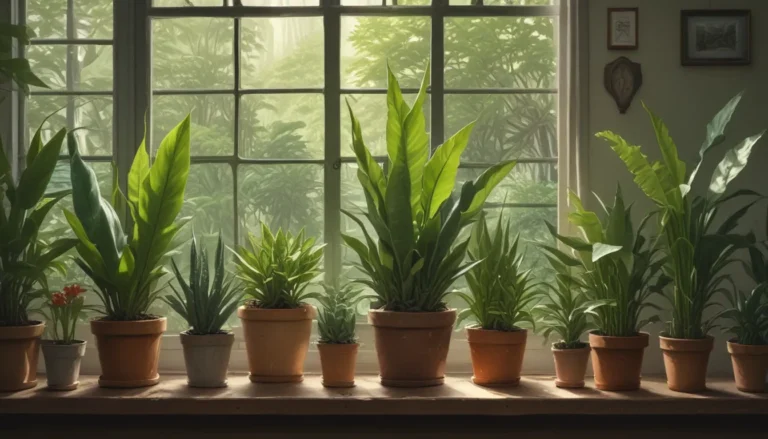Broccoli Buttoning: Understanding the Causes of Multiple Tiny Heads

Broccoli, also known as Brassica oleracea var. italica, is a member of the cabbage family and a popular cool-weather crop. While growing broccoli can be rewarding, it often comes with its challenges, especially when it comes to dealing with buttoning – the formation of multiple tiny heads instead of one large, compact head.
In this comprehensive guide, we will delve into the reasons behind buttoning in broccoli plants and explore proactive measures you can take to avoid this outcome. So, if you’re looking to cultivate a successful broccoli crop, keep reading to learn more!
Understanding the Growing Essentials
Before we delve into the causes of buttoning in broccoli plants, it’s important to understand the fundamental requirements for cultivating this cruciferous vegetable. Here are some key essentials you need to keep in mind:
- Full-Sun Location: Broccoli plants thrive in full-sun locations with neutral, organically-rich, well-draining soil that remains consistently moist.
- Spacing: Avoid planting broccoli too closely together to prevent pest and disease issues.
- Cool-Weather Crop: Remember that broccoli is a cool-weather crop and has specific temperature preferences.
Broccoli goes through three main phases of development: the juvenile stage, the start of the reproductive phase, and the maturation of the head. If a plant experiences stress during the juvenile stage, it may prematurely enter the reproductive phase, leading to the formation of small, button-like heads that will not mature into a single tight head.
Now, let’s explore the likely culprits behind buttoning in broccoli plants.
The Likely Culprits
When you notice your broccoli plants producing individual florets instead of solid heads, it indicates that the plant’s growing requirements are not being met. Here are the most common reasons for buttoning in broccoli plants:
-
Excess Nitrogen: Too much nitrogen in the soil can prolong vegetative growth at the expense of reproductive growth, resulting in buttoned curds or incomplete head formation.
-
Lack of Moisture: Broccoli requires consistent moisture throughout its growth cycle to transition smoothly from vegetative to reproductive growth. Inconsistent watering can stress plants and lead to the formation of small, bitter-tasting florets.
-
Temperature Extremes: Extreme temperatures, both cold and hot, can stress broccoli plants and disrupt their growth cycle. Ideal temperatures for broccoli cultivation range from above 40°F to below 80°F.
-
Poor Planning: Planting broccoli seeds too late or selecting seeds unsuited to your USDA Hardiness Zone can result in stressed plants producing small buttons or loosely formed heads.
Taking Proactive Measures
To prevent buttoning in your broccoli plants, it’s essential to take proactive measures and address the underlying issues. Here are some steps you can take:
-
Soil Testing: Conduct a soil test to determine if your soil needs amending with compost or fertilizer.
-
Balanced Fertilization: Use a well-balanced, slow-release fertilizer that does not contain an excess of nitrogen.
-
Consistent Watering: Water deeply once a week, adjust watering frequency based on weather conditions, and avoid letting plants dry out completely.
-
Weed Control: Regularly weed your garden to prevent invasive species from competing with broccoli for moisture.
-
Temperature Management: Provide shade during hot spells and protect plants from temperature fluctuations using row covers.
-
Planting Planning: Choose broccoli varieties suited to your growing zone, start seeds indoors if needed, and plant at the appropriate times for optimal growth.
By implementing these proactive measures, you can minimize the risk of buttoning in your broccoli crop and ensure a successful harvest.
Wrapping It Up
In conclusion, understanding the causes of buttoning in broccoli plants and taking proactive steps to address these issues are essential for cultivating a healthy and productive crop. By following the recommendations outlined in this guide, you can optimize your broccoli growing experience and enjoy a bountiful harvest of delicious, homegrown broccoli.
Before you head out to your garden to start growing your best broccoli crop yet, explore our range of cruciferous vegetable articles for more gardening tips and ideas. Additionally, check out our sister site, Foodal, for nutritious and flavorful broccoli recipes to enjoy your homegrown produce.
Share your gardening successes and challenges with us in the comments below. We love hearing from our readers and exchanging gardening insights!
For more resources on growing broccoli and maximizing your harvest, consider checking out the following guides:
- 10 Best Broccoli Varieties for Your Garden (Plus 3 Delicious Bonus Options)
- How to Grow and Care for Romanesco Broccoli
- Why Does My Broccoli Have Loose, Bitter Heads?
- Why Won’t My Broccoli Form Heads?
Happy gardening and happy growing!





